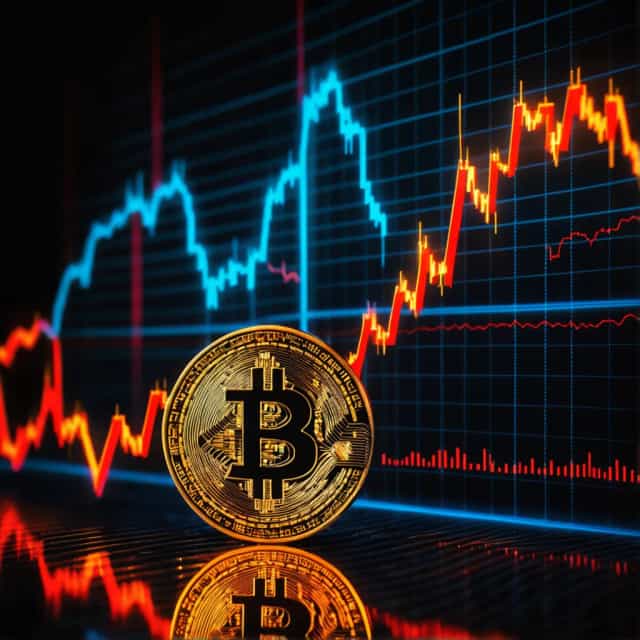
출처: Block Media
Market Overview: Dollar Strength, Global Currency Shifts, and Economic Indicators
The U.S. dollar saw modest gains on October 20 against major currencies, as market participants grappled with uncertainty stemming from an ongoing U.S. government shutdown, instability in the banking sector, and the intricate interplay of international economic and political factors. Developments in U.S.-China relations, Japanese politics, European fiscal concerns, and positive Chinese economic data added layers of complexity to the narrative, showcasing the interconnected nature of global currency movements.
Dollar Recovers on Safe-Haven Demand
The Dollar Index (DXY) climbed 0.05% to finish at 98.593, reversing a three-day losing streak. This rebound marked a significant departure from last Friday’s intraday low of 98.02, reflecting renewed safe-haven appeal for the greenback amidst ongoing uncertainties. Concerns surrounding the prolonged U.S. government shutdown and regional banking turmoil have limited the dollar’s upside potential.
However, Société Générale cautioned that technical factors might be temporarily buoying the dollar’s performance. In their analysis, the institution stated, “Dollar strength remains constrained by multiple headwinds, including banking sector stress, U.S. political gridlock, ongoing trade tariffs, and softening consumer spending.” These challenges highlight the fragile underpinnings of the dollar’s recent gains.
Yen Weakens Amid Political and Fiscal Developments
The Japanese yen depreciated slightly, with a 0.08% rise in the USD/JPY exchange rate to 150.71 yen. This movement coincided with speculation regarding the potential appointment of Sanae Takaichi, a senior figure of Japan’s Liberal Democratic Party, as Japan’s first female prime minister. Market sentiment around her leadership has been shaped by concerns over potential fiscal expansion, which could exacerbate Japan’s debt burden and weigh further on the yen.
Euro Struggles Despite Reduction in French Political Risks
The euro displayed mixed performance, hampered by lingering economic and political uncertainties across the Eurozone. While France suspended its contentious pension reforms—alleviating some domestic tensions—broader uncertainty continues to cap the euro’s strength. The EUR/USD exchange rate declined 0.06%, settling at $1.164.
Political risks across Europe remain a recurring theme for euro performance. Without fundamental shifts in fiscal policy or long-term resolution of regional disputes, the single currency faces enduring scrutiny from investors.
Banking Sector Challenges and Broader Economic Strains
Delinquent loans and fraud scandals across U.S. regional banks have intensified concerns about financial stability, further pressuring the dollar’s broader momentum. Troubles within the banking sector, combined with slowing consumer spending fueled by high tariffs, represent a significant headwind for the U.S. economy. Société Générale underscored these dynamics, warning that the interplay among these factors could dampen the dollar’s prospects in the near term.
Australian Dollar Benefits from Strong Chinese Growth
In contrast to the challenges faced by its American counterpart, the Australian dollar gained 0.48%, trading at $0.652. This uptick was largely attributed to robust Chinese economic performance in the third quarter, with GDP growth reaching 1.1% quarter-on-quarter and industrial production posting an impressive 6.5% year-on-year expansion.
Given the strong trade relationship between China and Australia, signs of economic recovery in China are frequently viewed as bullish for the Australian dollar. Analysts point to this as a key driver for the currency’s surge amidst a challenging backdrop for other currencies.
Geopolitical and Economic Drivers Shape Currency Markets
Global financial markets are currently navigating a complex web of factors. From geopolitical tensions like U.S.-China trade relations to domestic political shifts influencing fiscal policies, the dynamics driving currency trends are multifaceted. While external factors such as positive economic data in China buoy currencies like the Australian dollar, lingering political and financial risks in the U.S., Europe, and Japan serve as deterrents to broader gains.
Looking ahead, the interplay of safe-haven demand for the greenback, developments in regional politics, and the performance of major economies will continue to shape foreign exchange markets. While the dollar rebounds for now, its ability to maintain upward momentum remains uncertain amid structural challenges both domestically and globally. Currency volatility is likely to persist as investors parse through economic data and political developments in the upcoming weeks.










